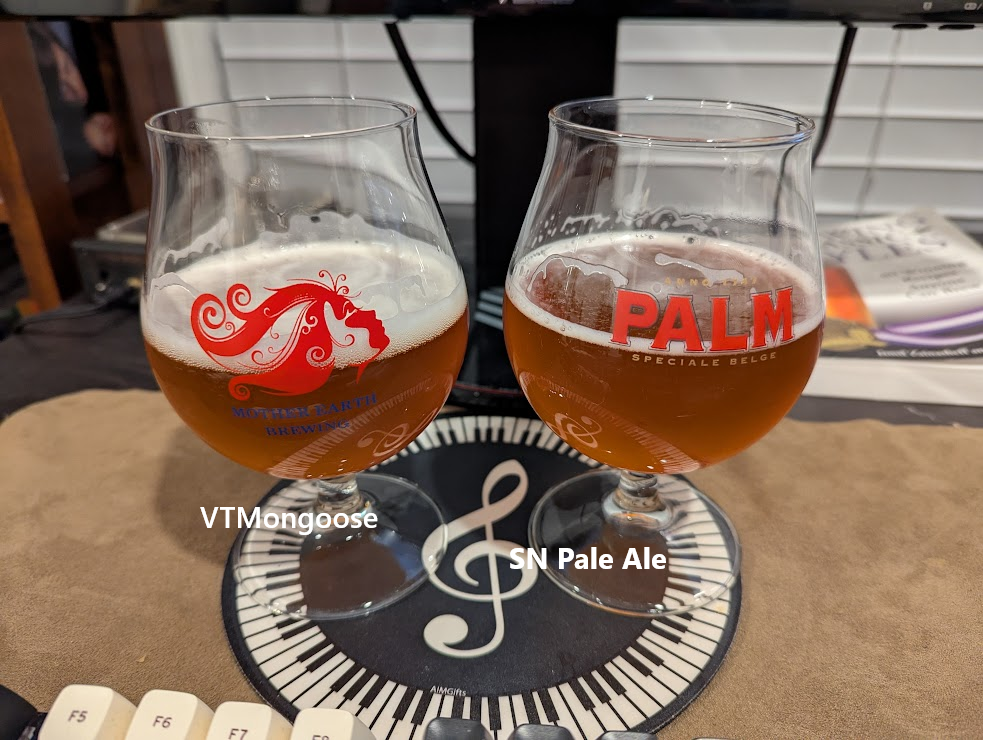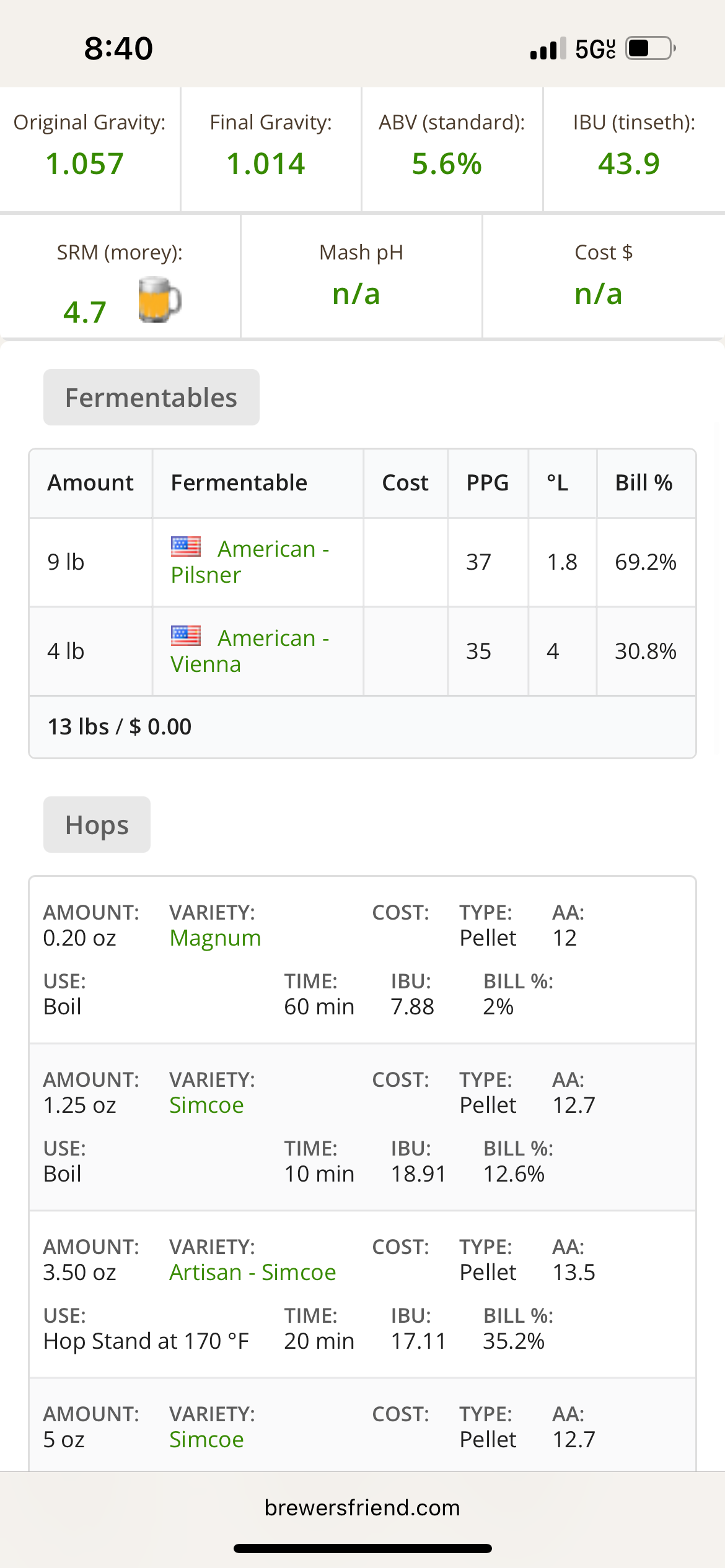Hi all - curious what your current hopping schedules are for a basic APA. I've always brewed a classic (outdated?!) 60/20/10/0/DH schedule, but sometimes feel like distinct characteristics get "crowded" with such a skew towards hot side additions.
Thinking about doing a simple Pils/Vienna malt base with ~16 IBU at 60, 10 IBU at 15 and then moving everything else to whirlpool.
What are others doing for house pale ales? If your hop schedule has changed over time, how has it changed and why?
Thinking about doing a simple Pils/Vienna malt base with ~16 IBU at 60, 10 IBU at 15 and then moving everything else to whirlpool.
What are others doing for house pale ales? If your hop schedule has changed over time, how has it changed and why?
















































![Craft A Brew - Safale S-04 Dry Yeast - Fermentis - English Ale Dry Yeast - For English and American Ales and Hard Apple Ciders - Ingredients for Home Brewing - Beer Making Supplies - [1 Pack]](https://m.media-amazon.com/images/I/41fVGNh6JfL._SL500_.jpg)









